Apples coveted Retina display has finally found its way to a full-size notebook courtesy of the latest MacBook Pro. But anyone familiar with this new system knows that Apple didnt simply add a higher resolution display to the standard MacBook Pro frame. Instead, theres an entirely reworked chassis thats nearly as thin as the MacBook Air and weighs more than a pound less than the standard Pro.
Customers can also configure a Retina system with up to 16GB of RAM and 768GB of flash storage, versus a maximum of 8GB of RAM and 512GB of solid state storage on a standard Pro. But hey, who are we kidding, the only reason that most people are going to dish over the extra cash for Apples latest and greatest is the 2880 x 1800 resolution goodness of the Retina display. And Ill go ahead and let you in a little secret: its a thing of beauty.
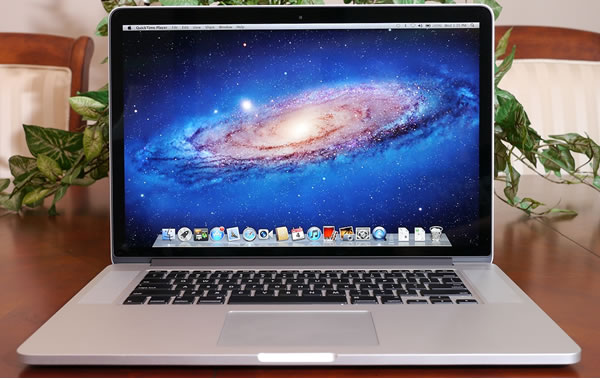
Our 'Retina' MacBook Pro review unit is equipped with a third generation Intel Core i7 quad-core processor clocked at 2.3GHz (Ivy Bridge, Turbo Boost up to 3.3GHz), 8GB of DDR3L 1600MHz RAM, 256GB of flash storage, Intel HD 4000 Graphics, a discrete Nvidia GeForce GT 650M GPU with 1GB of GDDR5 memory and a built-in FaceTime HD camera. This represents the base model of the MacBook Pro with Retina display that sells for a handsome $2,199.
I drew some similarities to the MacBook Air in terms of overall thickness but the two systems certainly dont look alike from the exterior. Where the Air is shaped more like a wedge that gains thickness as you move towards the back of the system, the Retina Pro features a uniform thickness throughout and is 1.5 pounds heavier (4.46 pounds total).
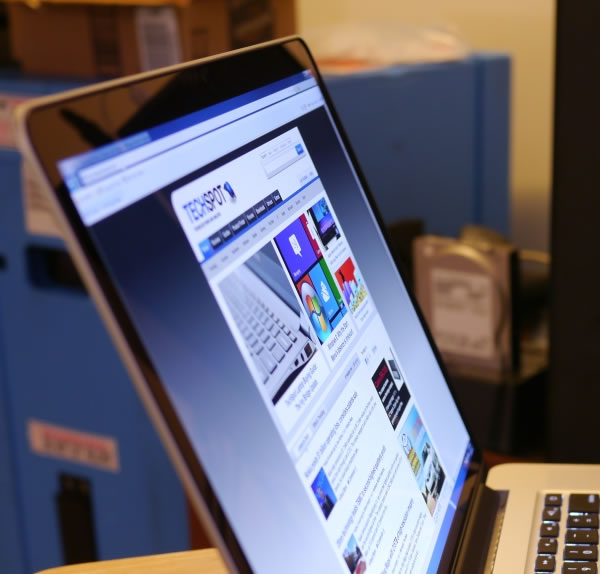
The front of the system features the familiar cutout to aid in lifting the lid, while on the right side we find a SDXC card reader, HDMI port and a USB 3.0 port. On the opposite edge is the MagSafe 2 power connector, dual Thunderbolt ports, another USB 3.0 port and a headphone jack. Theres no Ethernet jack on this system but Apple does sell a Thunderbolt to Gigabit Ethernet adapter for $29 should you require it. This is a comprehensible design-over-functionality compromise, in our opinion.
Under the lid we find the traditional backlit Apple keyboard and a large touchpad with an integrated click button. Unlike the Air which tucks the speakers under the keyboard, the Pro with Retina display has speaker grills on either side of the keyboard that are cut directly into the chassis. I prefer the stealth approach on the Air for aesthetic reasons but I suppose if you have the extra real estate, you might as well make the best use of it.
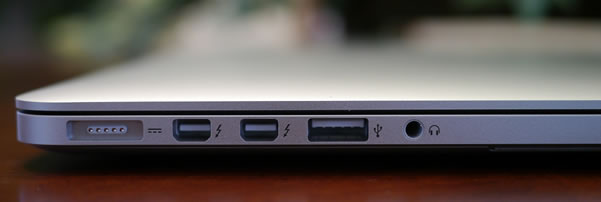
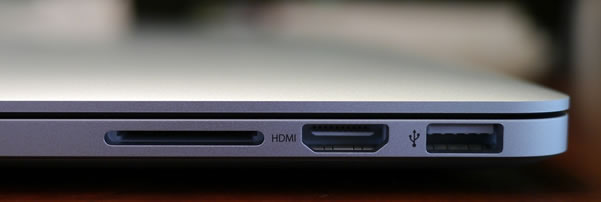
If you didnt know that this was the Retina display system, one look at the display even with the power off would point you in the right direction. For one, there is no traditional bezel surrounding the screen. It looks similar to say, the Infinity display found on the HP Envy 14 but the key difference visually is that the actual panel is just as dark black as the bezel around it.
It really is a stunning look that is achieved partially because Apple removed the cover glass in front of the LCD panel. As Anandtech explains, LCD panels typically consist of unattractive squares with two pieces of glass and several filters and polarizers. The bezel exists to hide the rough edges of the glass and LCD panel, although more recent attempts like the aforementioned Infinity display use another piece of glass on the exterior to give the illusion that the panel and bezel are a single unit.
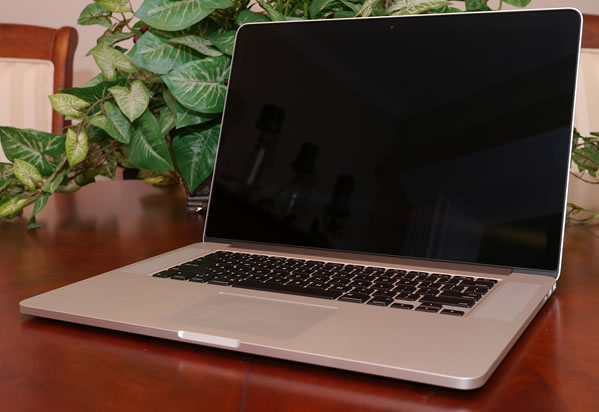
Apple has integrated the bezel and the outermost glass into the LCD stack so you end up with an effect similar to cover glass without the extra reflections that it can sometimes introduce. The danger here is that the outer glass and the LCD are essentially a single unit so if you scratch the glass, youre doing damage to the actual LCD panel as well. Its really no different than working with a matte display since youre dealing with the panel externally there too. Its sort of a give and take relationship but so long as you are careful when working on your system, the tradeoff is certainly worth it.
Above the display is the FaceTime HD camera and on the back of the super thin lid is the trademark Apple logo that glows white when the system is powered on.
Apple originally shipped the MBP with Retina display with OS X Lion and a free upgrade to Mountain Lion when it became available. Any system bought today comes straight with OS X latest version.
As I alluded to in my MacBook Air review a couple of weeks ago, Im strictly a Windows user so Im reviewing the hardware with what could be called fresh eyes, although I do have more experience with a Mac under my belt after using that system. Ive also had extensive experience with iOS since the original iPad hit the market.
No comments:
Post a Comment